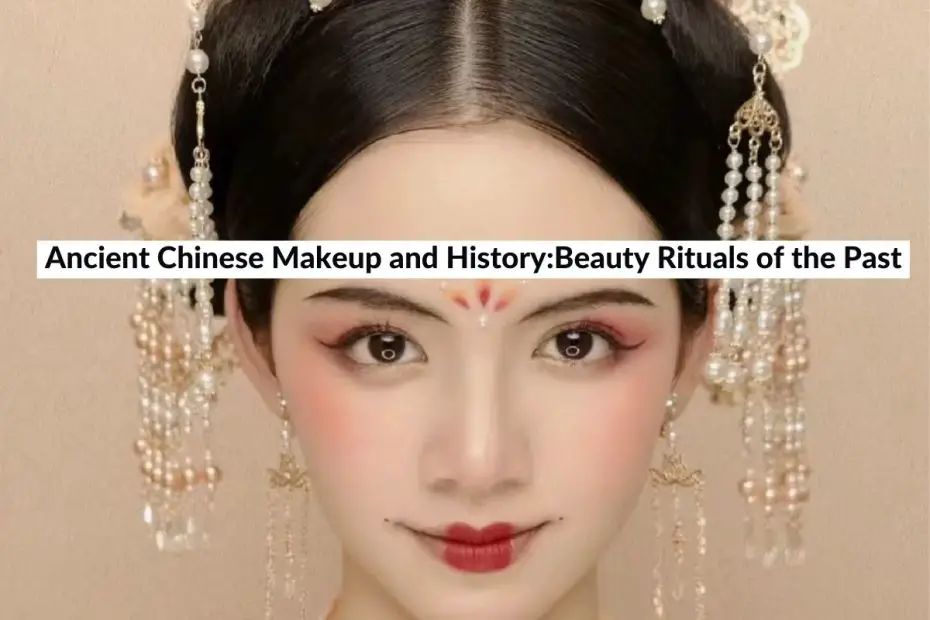Chinese women have a long history with makeup, dating back to ancient times. In China, there is an old saying that the love of beauty is common to all human beings.
Ancient Chinese women sought out beautiful things to enhance their appearance, even without the presence of social media platforms like Pinterest and YouTube.
The love for cosmetics, perfumes, and garments was pervasive throughout the culture.
Let’s explore the history of Chinese women’s love for beauty together 😉
Chinese Makeup History:
| Dynasty | Makeup Features | Example | Explanation |
|---|---|---|---|
| Han Dynasty | White powder and black Dai | Use of finely ground rice grains and lead powder for face makeup | Han Dynasty women advocated white powder and black Dai for makeup. They used natural “cosmetics” like finely ground rice grains on their faces for a healthy but less noticeable whitening effect. Lead powder was also used, despite its toxicity, because of its strong whitening effect. The eyebrows were drawn using black Dai, which was dissolved in water and widely used during this period. |
| Wei and Jin Dynasties | White makeup and diverse styles | Xiehong makeup, Luomei makeup, Xiaoxia makeup | In the Wei and Jin Dynasties, people preferred white makeup and often used lead powder to create a thickly coated face. They also embraced diverse makeup styles, such as Xiehong makeup, Luomei makeup, and Xiaoxia makeup. These styles varied in their application and appearance, providing women with different options for their makeup. |
| Six Dynasties period | “Ehuang” makeup | Yellow paint on the forehead or paste method | The Six Dynasties period saw the emergence of “Ehuang” makeup, inspired by Buddha statues. This style involved applying special yellow paint on the forehead, creating a gradual effect. Another method involved cutting a yellow sheet material into a specific shape and pasting it on the forehead. The “Ehuang” makeup was a distinct and representative style of this period. |
| Tang Dynasty | Red makeup and elaborate steps | Peach blossom makeup, Jiu Yun makeup, Fei Xia makeup | The Tang Dynasty embraced red makeup, and women preferred graceful and luxurious face makeup. Rouge became a popular beauty item, and extensive application of red rouge on the face created a rich and luxurious effect. Tang girls followed elaborate makeup steps, including applying powder, extensive rouge, drawing eyebrows using Dai, applying Huadian, dotting Mianyan, drawing Xiehong, and applying lipstick. The makeup of this period was intricate and sophisticated. |
| Song Dynasty | Light and elegant thin makeup | Yuanshan eyebrows, use of pearls for embellishment | The girls of the Song Dynasty preferred light and elegant thin makeup. They inherited the eyebrow shape of the Tang Dynasty, known as “Yuanshan eyebrows.” The use of rouge was more conservative compared to the Tang Dynasty. Noblewomen in the court started using pearls as embellishments, particularly on Mianyan, adding sophistication to their makeup. |
| Ming Dynasty | Natural and bright makeup, emphasis on white powder | Use of appropriate rouge, highlighting with white powder | The aesthetics of Ming Dynasty makeup leaned towards natural and bright looks. Women used appropriate amounts of rouge to add temperament and a healthier appearance. They highlighted certain areas, such as the forehead, nose, and jaw, with white powder for a more pronounced effect. Ming Dynasty makeup was closer to modern aesthetics and gave a bright and gentle overall impression. |
Thanks to the ancient Chinese makeup practices, modern Chinese makeup has flourished, giving rise to trendy Chinese makeup brands that offer unique styles and exciting products with beautiful packaging.
Chinese Makeup History in Zhou Dynasty:
During the Zhou Dynasty, a new era in Chinese makeup history emerged and they also developed Chinese nail polish for the first time. Eyebrow makeup, lip makeup, face makeup, and various cosmetics such as makeup powder, facial cream, lip gloss, and fragrance became popular trends.
The makeup style of the Zhou Dynasty was known for its simplicity and elegance, primarily using black and white colors. This era is referred to as the “plain makeup era.”
Chinese Makeup History in the Qin and Han Dynasty:
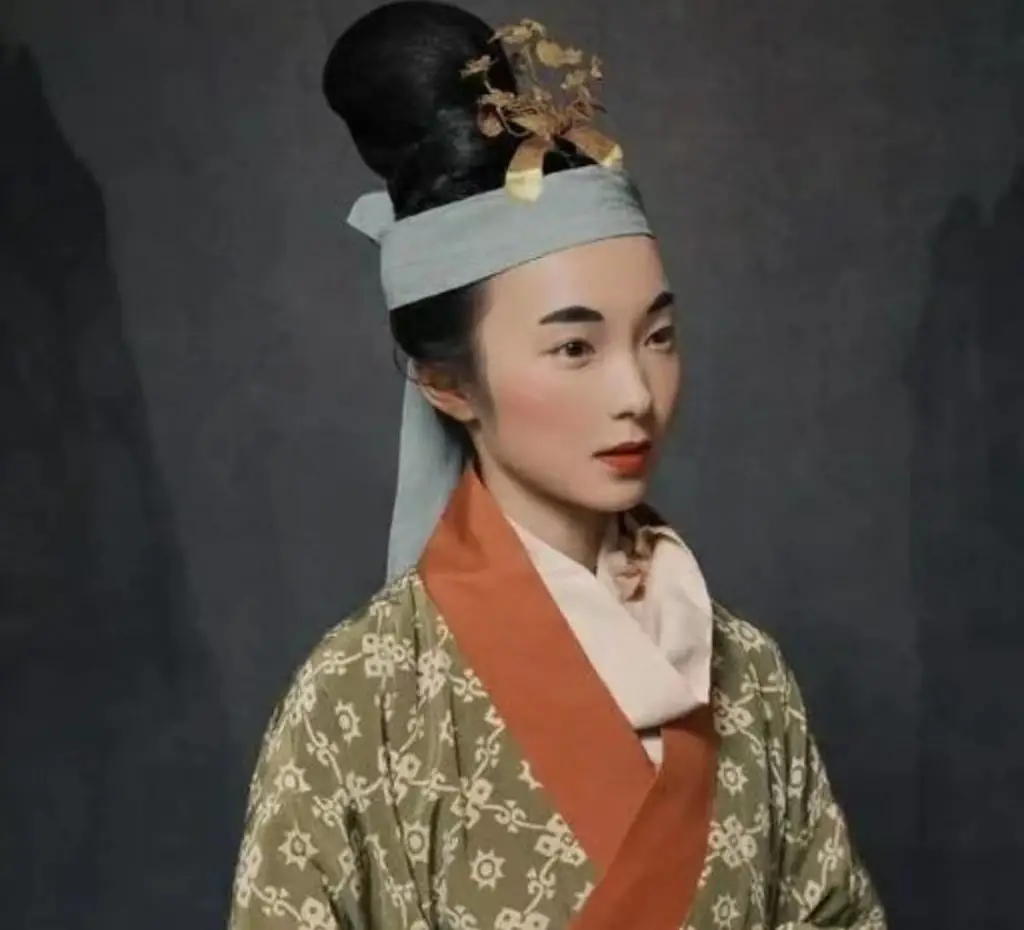
The Qin and Han Dynasties saw significant advancements in makeup customs. Rice powder was commonly used, and a paste-like lead powder was invented for makeup. Red powder, also known as “fufen,” became popular during this period, and women used powder and Zhu (a red material) as foundation.
Rouge, made from safflowers, was applied to the cheekbones. Cinnabar, a red mineral pigment made from mercury sulfide, was used for face makeup. Graphite, known as Mo Dan, was used to draw eyebrows. Lip grease, made of water and cinnabar, prevented lips from cracking and bleeding, resembling modern-day lipstick.
Chinese Makeup History in the Wei, Jin, Southern, and Northern Dynasties:
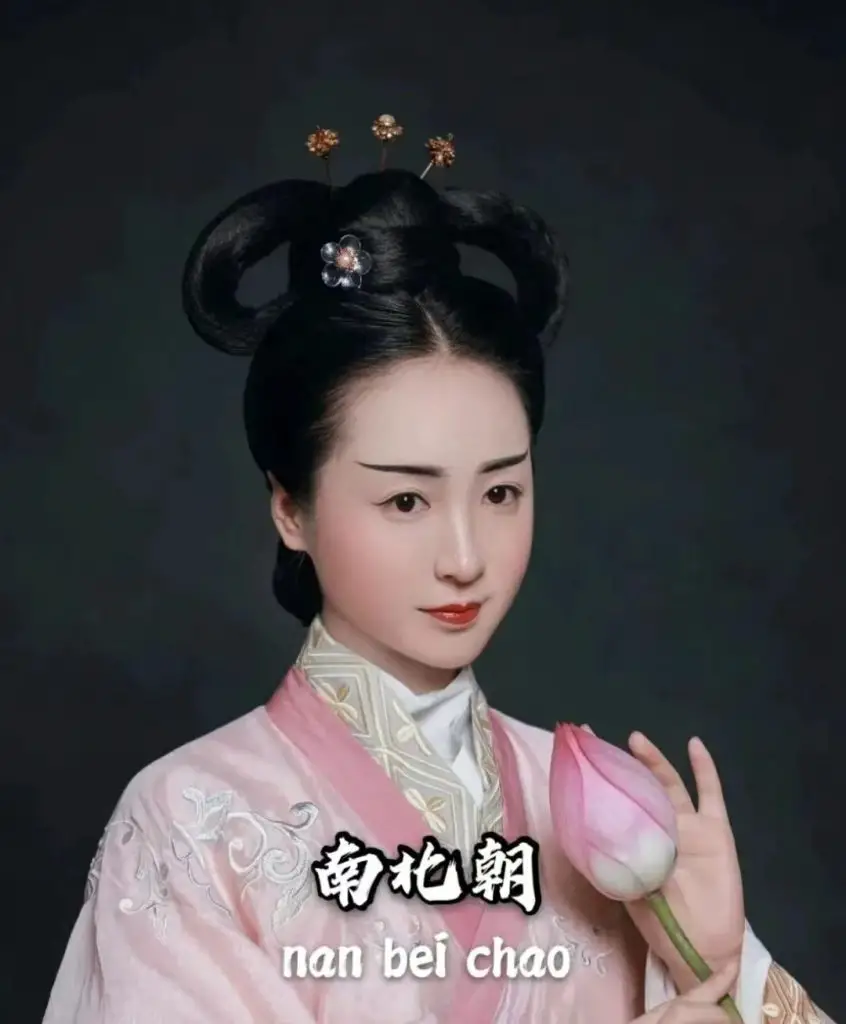
During this period, women’s makeup skills matured, showcasing bold colors and diversified tendencies. White powder was applied to women’s faces, and court ladies often added rouge to their cheeks. Forehead yellow, a decoration dyed and painted on the forehead, became popular.
Oblique red, arranged as bright red crescents or scars on the cheeks, gained prominence. Huadian, referring to the makeup between the eyebrows, featured a popular plum-shaped flower called “plum blossom makeup.”
Chinese Makeup History in Sui, Tang, and Five Dynasties:
In the Sui Dynasty, women preferred simple makeup, appreciating the beauty of minimalism. The Tang Dynasty witnessed frequent exchanges with foreign cultures, influencing women’s makeup styles. Makeup technology reached new heights during this era.
The order of face makeup in the Tang Dynasty included lead powder, rouge, eyebrows, appliqués, dotted face and slanted red, and lipstick.
Strong red makeup was popular, and various shades and sizes of red makeup were in vogue. The Tang Dynasty also introduced different eyebrow styles, with around fifteen popular variations.
Makeup Styles in the Tang Dynasty:
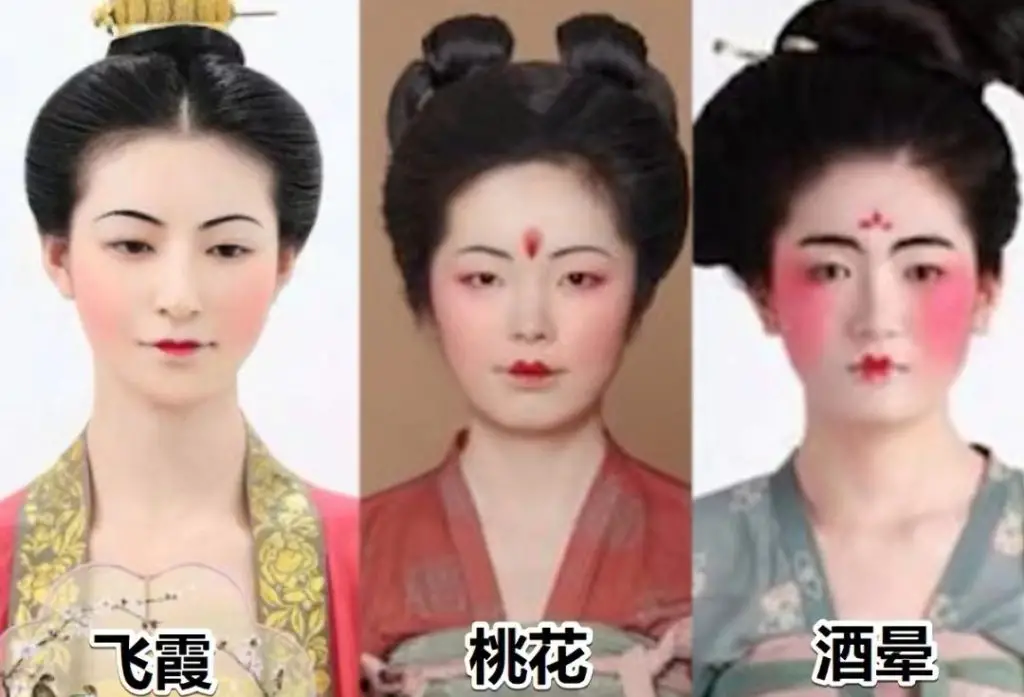
- Jiuyun Makeup (酒晕妆, jiǔ yùn zhuāng): During the height of the Tang Dynasty, there was increased cultural exchange between different ethnic groups, resulting in further developments in women’s makeup. Jiuyun makeup simulated the flushed appearance of a woman after consuming wine. It was characterized by intense red tones and was one of the most vibrant styles of red makeup.
- Feixia Makeup (飞霞妆, fēi xiá zhuāng): Feixia makeup featured a white base with a touch of red, creating a delicate and ethereal look. It conveyed a sense of lightness and brightness, reminiscent of flying rosy clouds. This style exuded a graceful and feminine charm.
- Peach-blossom Makeup(桃花妆,Táo Huā Zhuāng): Peach-blossom makeup was a lighter and more girly style characterized by its soft and bright appearance. It aimed to mimic the natural beauty of a peach blossom, conveying a sense of innocence and allure.
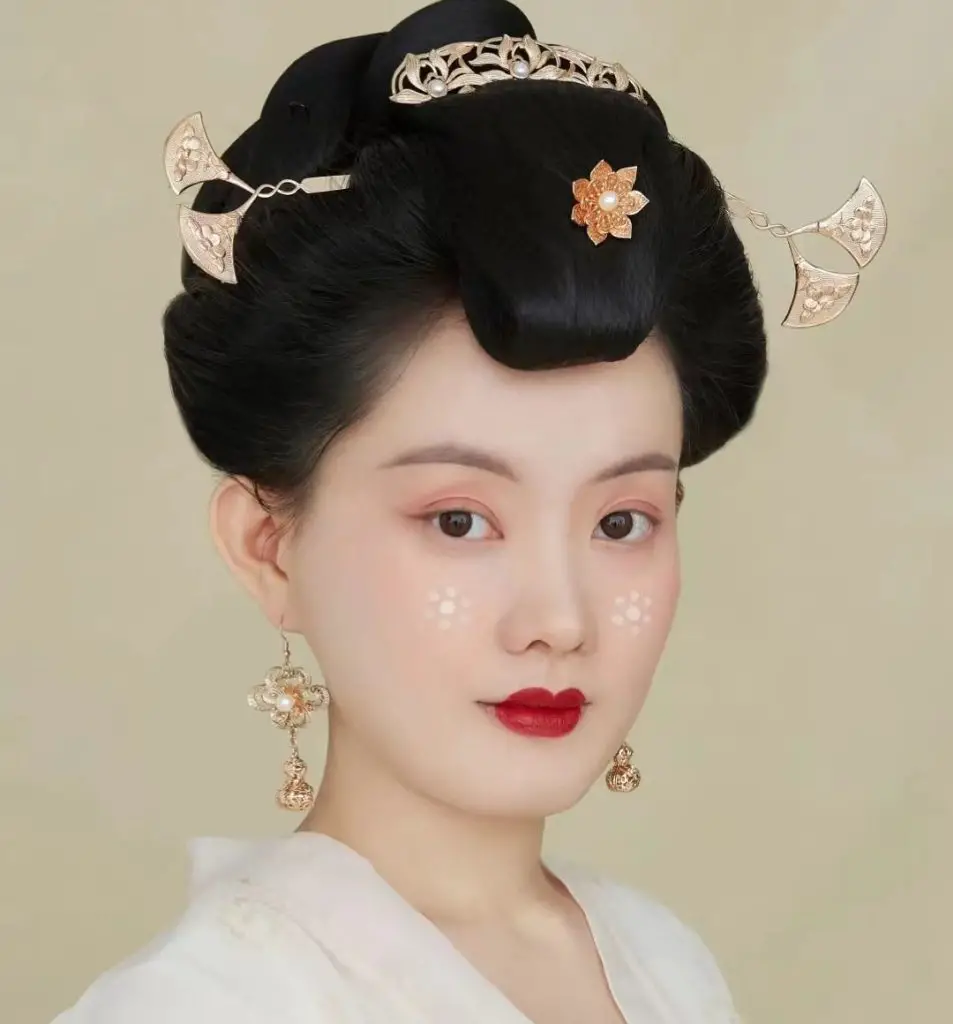
4. Tear Makeup(泪妆,Lèi Zhuāng): Tear makeup was a unique white makeup style that aimed to mimic the appearance of tear stains on the cheeks. It involved applying plain powder to create the illusion of tears running down the face. This style was popularized by Madam Guoguo, the sister of Yang Guifei, who opted for a more subtle look by avoiding the use of intense rouge.
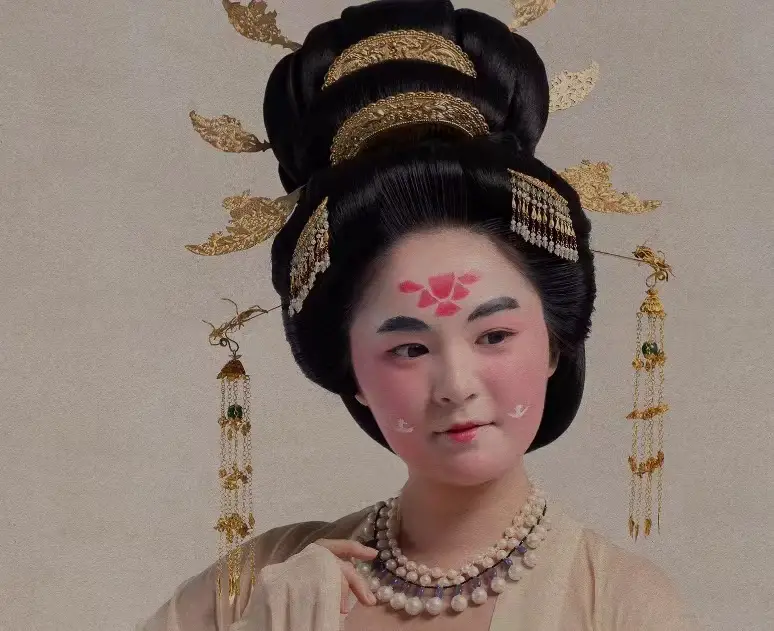
5. Ti makeups(啼妆, tí zhuāng) Ti Makeup originated in the Eastern Han Dynasty but experienced a resurgence in popularity during the Tang Dynasty. This style involved applying rouge under the eyes and shaping the eyebrows into the form of the Chinese character “eight (八)”. The Xiehong (a red cosmetic) was then blended with the face, creating a shallow marginal line resembling tear stains. This resulted in a pitiful and soft beauty aesthetic.
6. Shishi makeup (时世妆, shí shì zhuāng): The most prominent of the late Tang dynasty women’s distinctive make-up. It is further exaggerated on the basis of the Ti makeup, the two cheeks painted redder, lips painted black, eyebrows painted as the end of the forked “Fen Shao eyebrows (分梢眉)”, or shaped like a spring silkworm out of a cocoon “Chu Jian eyebrows (出茧眉)”, the overall image is black eyebrows, face ochre, black lips.
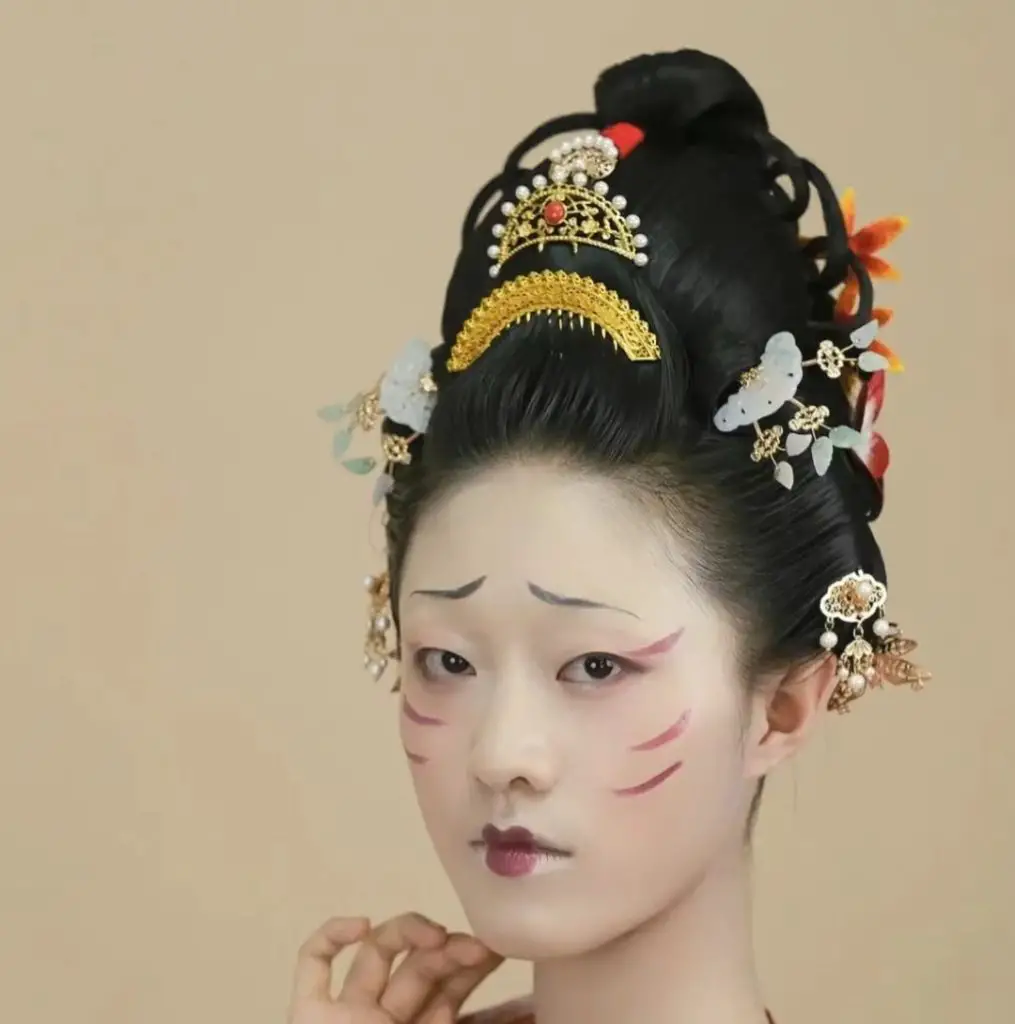
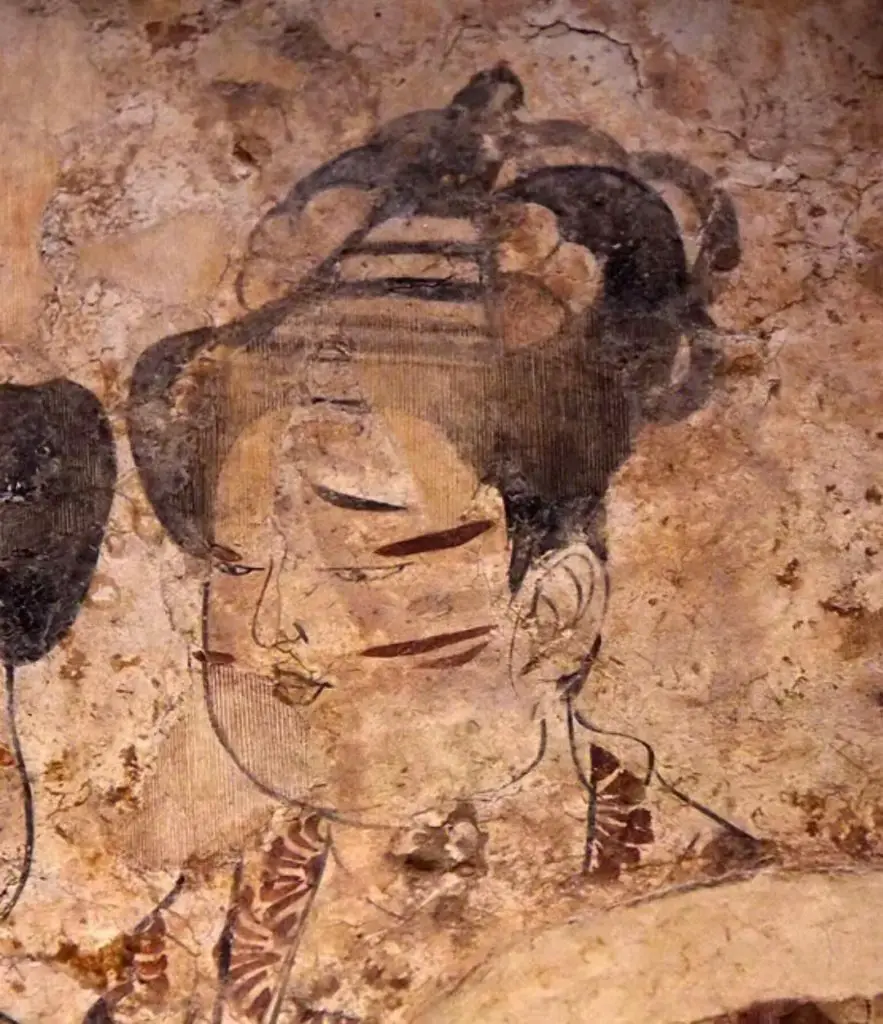
7. Xie Yun makeup (血晕妆,xiě yùn zhuāng): A simple way to describe the Xieyun Makeup is that the woman shaves off all of her eyebrows and then draws three or four red or purple lines above and below her eyes to imitate the effect of being scratched, giving the impression of a bloodied wound.
During the later years of the Tang Dynasty, makeup transitioned into a period of peace and stability, leading to lighter and softer styles. Red makeup remained prominent, but some women embraced fashion and innovation, experimenting with exotic elements. One notable makeup style during this period was Shishi makeup, characterized by pronounced features such as heavily reddened cheeks, black or dark red lips, and sharply defined eyebrows.
As the Tang Dynasty progressed, women’s lives became more constrained due to social and political unrest. Consequently, makeup gradually changed. Xie Yun makeup became popular, featuring shaved eyebrows and the application of three or four red or purple lines above and below the eyes, imitating the appearance of a bloodied wound.
Makeup during the Tang Dynasty flourished due to the era’s social, economic, political, and cultural prosperity, as well as its open-minded atmosphere. Women enjoyed unprecedented freedom of expression in their makeup choices, ranging from subtle grace to elegant sophistication and even bold and impactful styles.
Chinese Makeup History in the Song Dynasty:
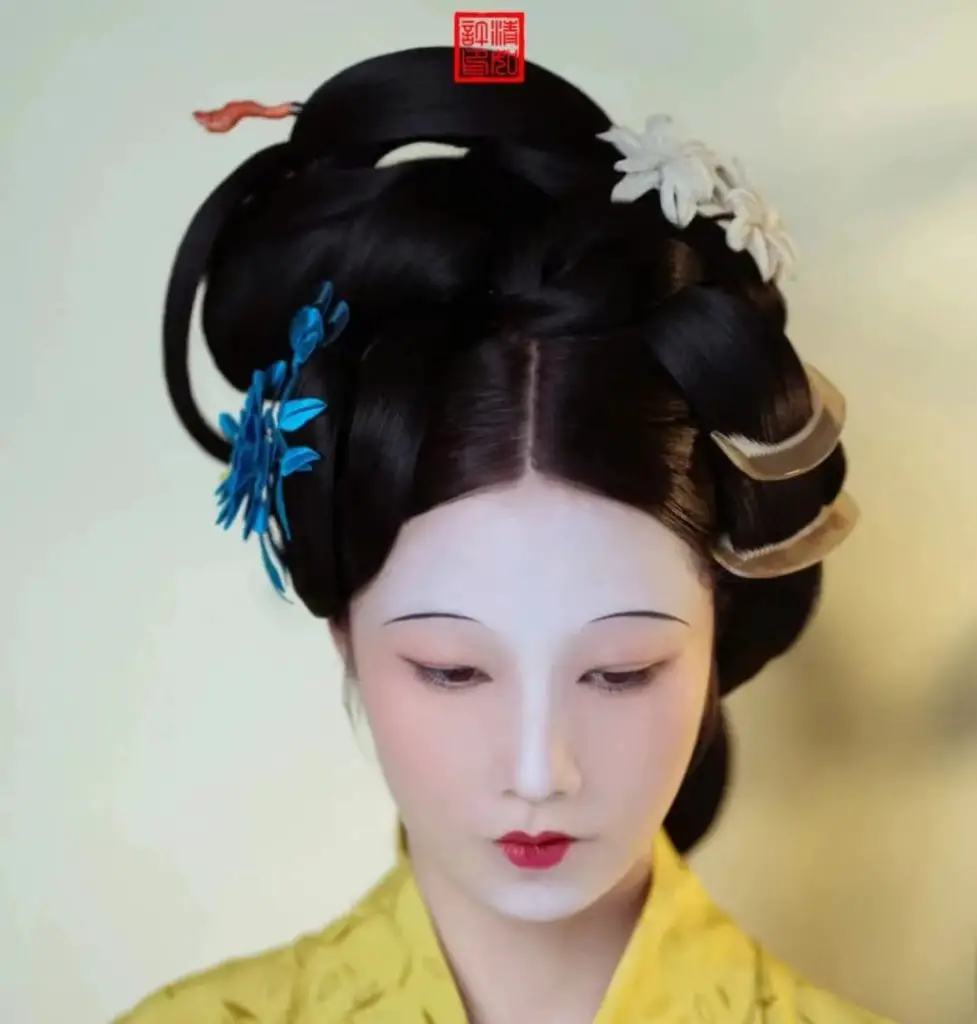
Women’s makeup in the Song Dynasty focused on simplicity and a natural appearance. While facial makeup underwent changes, it was not as elaborate and extravagant as during the Tang Dynasty. White and red remained the basic colors, and women preferred using ink instead of Dai to draw their eyebrows.
At this time, “San Bai makeup (三白妆)” began to appear. Women would put white powder on their foreheads, noses, and chins, which was equivalent to modern day’s practice of highlighting.
The noblewomen of the court were the first to use pearls as an embellishment to their makeup, and they used pearls to embellish Mianye.
Chinese Makeup History in the Ming and Qing Dynasties:
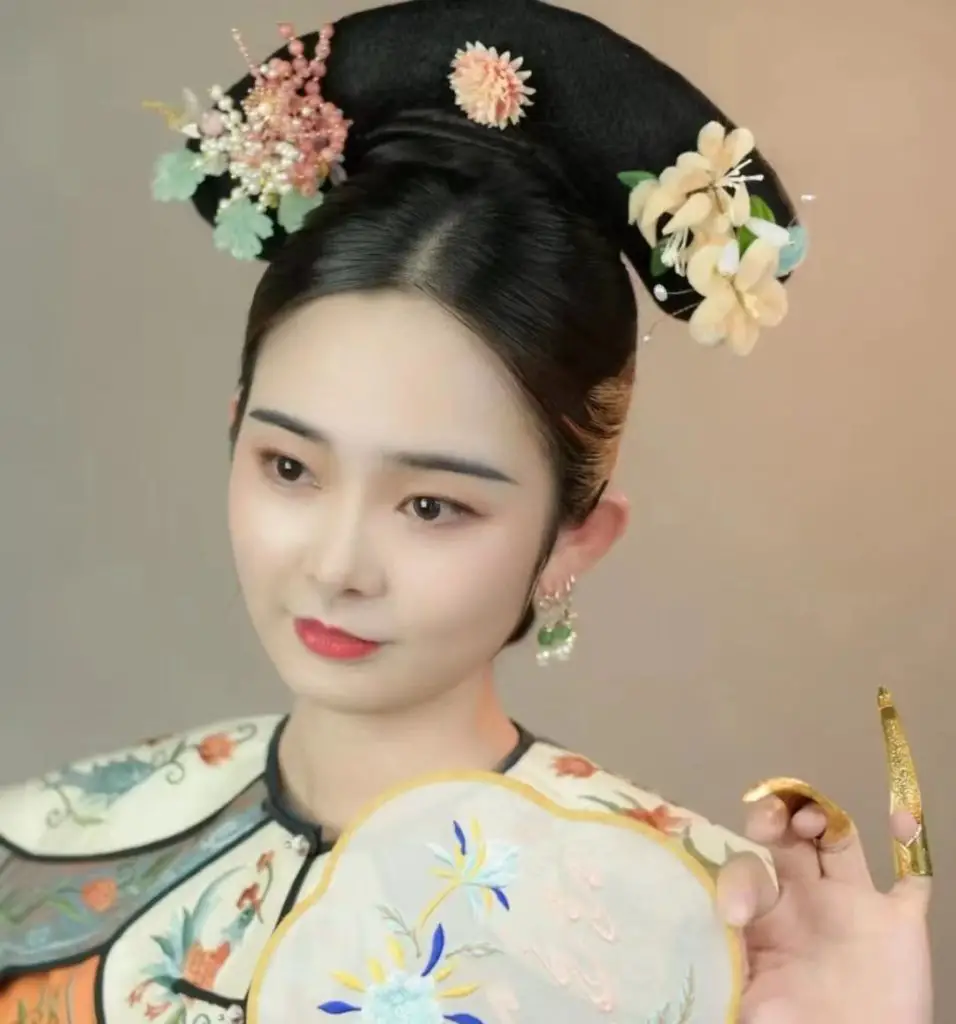
In the Ming and Qing Dynasties, women’s red makeup was thin and elegant, reminiscent of the Song and Yuan Dynasties. New types of makeup powder were introduced, such as “zhenzhu” powder extracted from the flowers of Mirabilis jasmine, which was popular in spring and summer.
Hosta powder gained popularity during autumn and winter. Women in the Qing Dynasty favored curved eyebrows, slender eyes, and thin lips. Towards the end of the Qing Dynasty, women moved away from heavy makeup, ending the tradition of red makeup that had prevailed for over two thousand years.
Chinese Makeup History in the Early Republic of China:
In the early Republic of China, women followed the makeup aesthetics of the late Qing Dynasty, emphasizing delicate and pretty faces, slender eyes and eyebrows, and thin lips. Influenced by Western cultures, women began to view makeup from a new perspective and adopt different standards, signifying their departure from the constraints of feudal society.
(Current Popular Chinese Makeup Brands are Zeesea Cosmetics, Florasis, Catkin and Flower Knows. I wrote review articles for each.)
Ancient Chinese Makeup Tutorial:
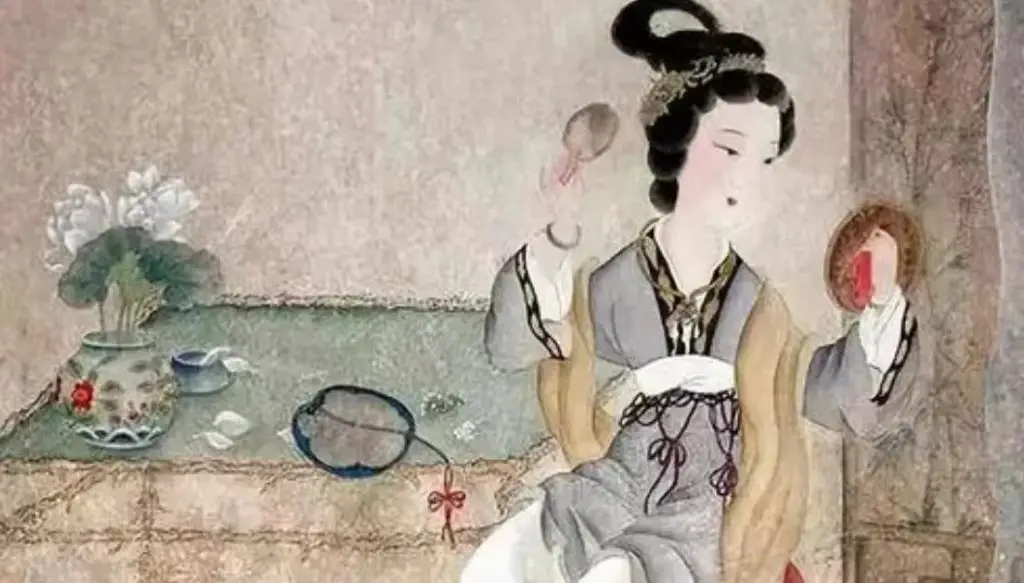
Applying Powder (敷粉, Fū fěn): In ancient China, having fair skin was highly desirable and considered a symbol of wealth and beauty. Women would grind rice into a fine powder and apply it to whiten their faces. The practice originated from the belief that fair skin indicated a life of luxury without having to work under the sun. Over time, powdered and smooth skin became a fashionable trend.
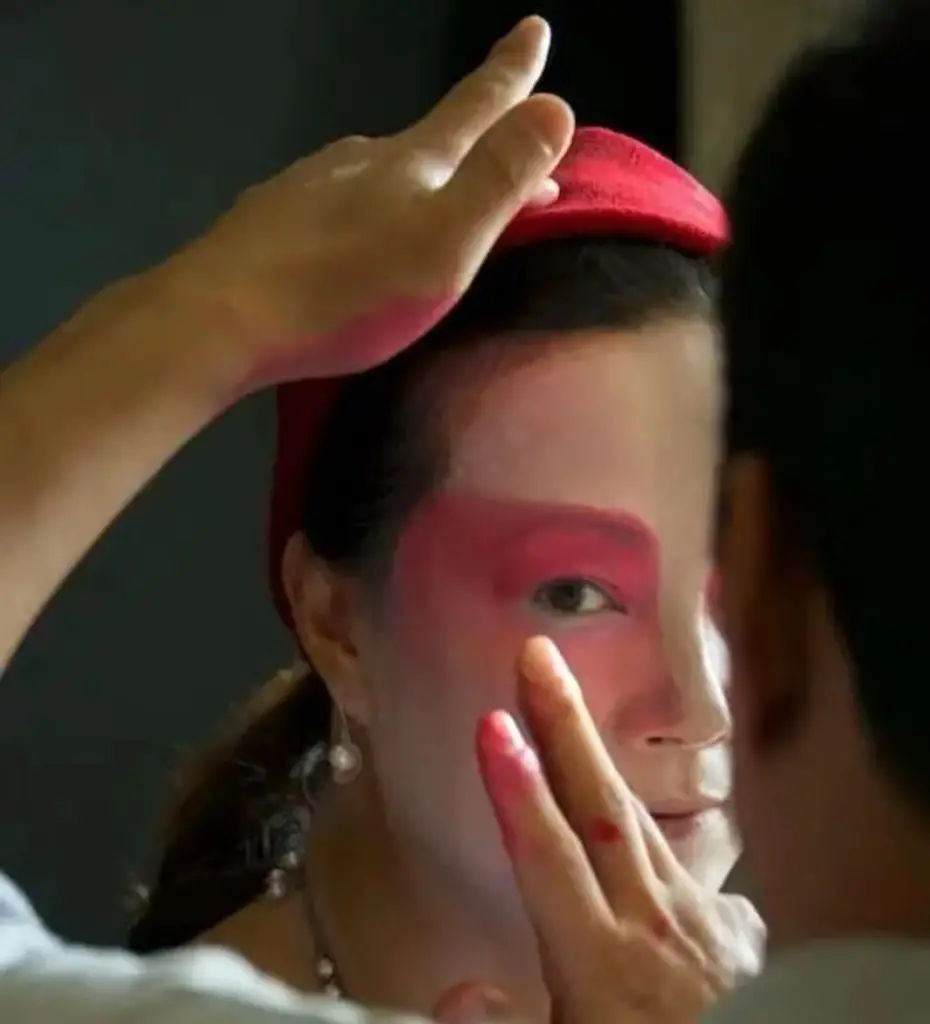
Applying Rouge (涂胭脂, tú yānzhī): Ancient Chinese women used rouge to achieve a healthy and rosy glow. They extracted juices from red and blue flowers to create rouge, which came in both powder and cream forms. Cream rouge consisted of animal fat and beeswax, while powder rouge was made by drying and blending flowers. Women applied blush to areas such as the apples of their cheeks and under their eyes.

Painting Eyebrows (描黛眉, miáo dài méi): Eyebrows played a significant role in ancient Chinese makeup, framing the face and balancing the overall style. Eyebrow shapes and styles underwent elaborate changes throughout Chinese history, ranging from thin lines to thick and bushy brows or even shaved brows.
Different styles of eyebrows were associated with individual fate. The Tang Dynasty emperor Xuanzong even authored a book titled “Shí Méi Tú” illustrating ten different eyebrow patterns, which drew inspiration from natural objects like leaves and flower petals.
Applying Lip Color (涂唇脂, tú chún zhī): Lip color was another essential aspect of ancient Chinese makeup. Women frequently applied lipsticks made from red pigments, vermillion, and animal fat. Lip makeup provided a healthy color to the lips while protecting them from dry winds.
Preferred lip sizes were smaller than average, as smaller lips were considered more beautiful in proportion to the face. An idiom, “樱桃小嘴” (yīngtáo xiǎo zuǐ), describes these cherry-like lips—small, round, and red.
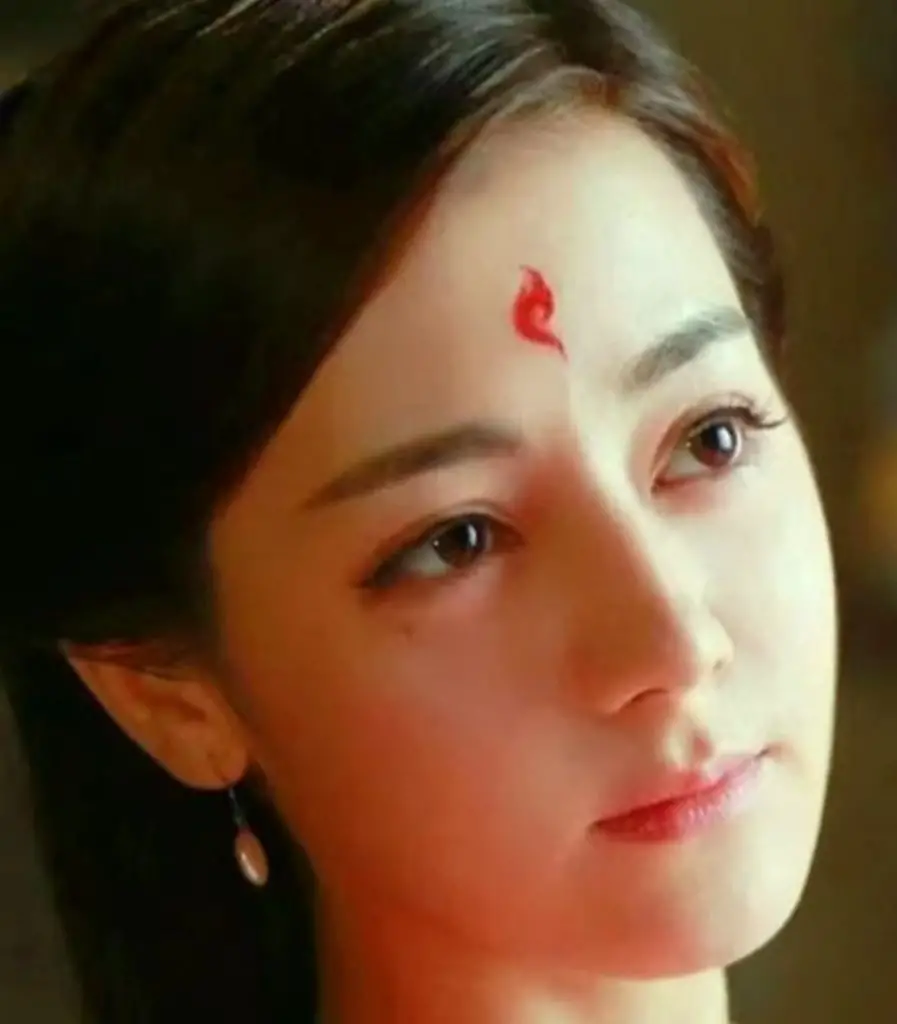
Adding Facial Ornaments (贴花钿和点面厣, tiē huā diàn hé diǎn miàn yǎn): To further enhance their appearance, women adorned their faces with ornaments such as pearls, flower petals, and intricate facial paintings. These decorative styles were predominantly worn by women from affluent families.
FAQs:
Did ancient Chinese men wear makeup as well?
Yes, makeup was not limited to women in ancient China. Men also used cosmetics, although their application and styles differed from those of women. Men mainly focused on achieving a more youthful appearance by using skincare products and applying subtle makeup, such as light powders to even out their complexion or enhance their eyebrows.
The emphasis for men was on maintaining a refined and polished look rather than creating dramatic makeup styles.
Were there any specific makeup tools used in ancient China?
Yes, ancient Chinese makeup application involved the use of various tools. Here are a few examples:
- Makeup brushes: Brushes made from animal hair, such as goat or squirrel, were used for applying face powders, blushes, and eyeshadows.
- Combs: Combs made from materials like wood or bone were used to style and shape the hair. They were often intricately carved and decorated.
- Containers and compacts: Small containers made from materials such as porcelain or jade were used to store powders, creams, or lip colors. These containers were often beautifully designed and portable for convenience.
What role did makeup play in ancient Chinese society?
Makeup held significant cultural and social significance in ancient China. It was not just a means of enhancing beauty but also a way to signify one’s social status, adherence to cultural norms, and express personal taste.
Wearing makeup was seen as an art form, reflecting an individual’s refinement, femininity, and attention to detail. The application of makeup was considered an essential skill for women, demonstrating their knowledge of beauty rituals and their ability to present themselves in an elegant manner.
Were there any risks or side effects associated with ancient Chinese makeup?
Yes, some makeup practices in ancient China carried certain risks and side effects. For example:
- Toxic ingredients: Some cosmetic products contained substances like lead or mercury, which could be harmful if used excessively or over a prolonged period. These ingredients could cause skin irritations, discoloration, or even lead to poisoning.
- Skin sensitivity: Not all individuals had the same tolerance to makeup products. Some people might have experienced allergic reactions or skin sensitivities to certain ingredients used in ancient Chinese cosmetics.
